Custom Custom Medical Surgical Nurse Exam 2
ATI Custom Custom Medical Surgical Nurse Exam 2
Total Questions : 45
Showing 10 questions Sign up for moreA nurse in an urgent care center is caring for a client who fell and injured her ankle. The ankle appears swollen and ecchymotic. Which of the following interventions should the nurse take? (Select all that apply)
Explanation
These are the correct interventions that the nurse should take. Applying a compression bandage to the client's ankle can help reduce swelling and provide support to the injured area. Elevating the client's foot can also help reduce swelling by promoting venous return. Checking the client's toes for color, temperature, and sensation is important to assess for any potential nerve or vascular damage.
Applying heat to the client's ankle is not recommended as it can increase swelling and inflammation. Encouraging range of motion of the client's foot is also not recommended as it can cause further injury to the affected area.
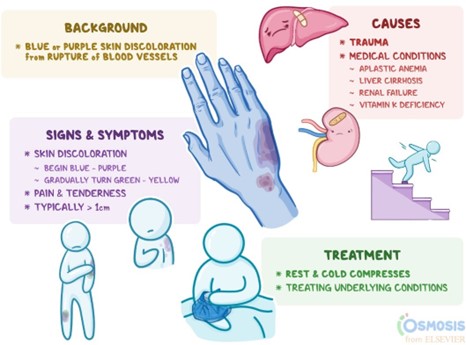
While collecting data from a client who has a cast on his right leg, a nurse locates an area on the cast that feels warm to the touch. Which of the following findings should the nurse identify as a complication to the client's condition?
Explanation
The nurse should identify infection as a complication to the client's condition. A warm area on the cast could indicate the presence of an underlying infection. The warmth could be due to an increase in blood flow to the area as the body tries to fight off the infection.
Uneven cast drying, pressure from the cast, and poor circulation are not complications that would cause a warm area on the cast. Uneven cast drying could cause discomfort but would not result in warmth. Pressure from the cast could cause skin breakdown but would not result in warmth. Poor circulation could cause coolness or pallor but would not result in warmth.
A nurse is collecting data from a client who has rheumatoid arthritis. Which of the following is an expected finding for this client?
Explanation
Boutonniere deformity is an expected finding for a client who has rheumatoid arthritis. It is a type of hand deformity that can occur in people with rheumatoid arthritis. It is characterized by a bent middle finger joint and a hyperextended fingertip.
Tophi, osteoma, and Heberden's nodules are not expected findings for a client who has rheumatoid arthritis. Tophi are deposits of uric acid crystals that can occur in people with gout. Osteoma is a benign bone tumor. Heberden's nodules are bony growths that can occur in people with osteoarthritis.
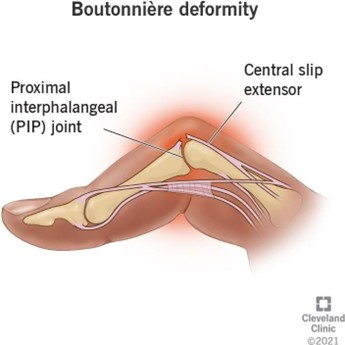
A nurse is receiving a transfer report for a client who has a head injury. The client has a Glasgow Coma Scale (GCS) score of 3 for eye-opening, 5 for best verbal response, and 5 for best motor response. Which of the following is an appropriate conclusion based on this data?
Explanation
An appropriate conclusion based on this data is that the client opens his eyes when spoken to. A GCS score of 3 for eye-opening indicates that the client opens his eyes in response to voice.
The client is not unconscious, as a GCS score of 3 for eye-opening indicates that the client is able to open his eyes in response to voice. The client is not unable to make vocal sounds, as a GCS score of 5 for best verbal response indicates that the client is able to make vocal sounds. The client may or may not be able to follow simple motor commands, as a GCS score of 5 for best motor response indicates that the client is able to localize pain.
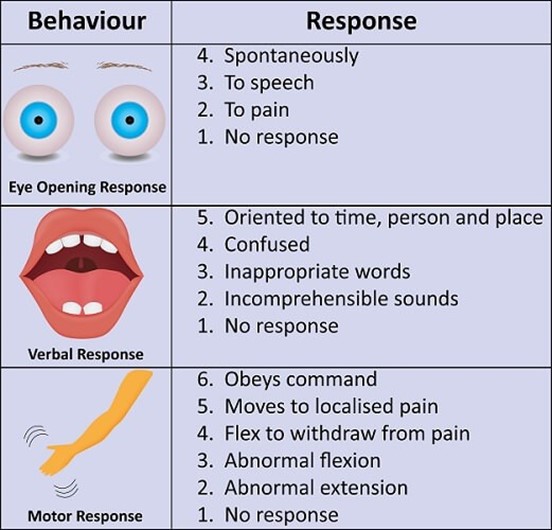
A nurse is assisting a client who is postoperative following a total hip arthroplasty into a supine position. Which of the following actions is appropriate to prevent hip dislocation?
Explanation
An appropriate action to prevent hip dislocation in a client who is postoperative following a total hip arthroplasty is to place a wedge pillow between the legs. This helps to maintain proper alignment and prevent the legs from crossing or adducting, which can cause hip dislocation.
Placing a trochanter roll against the thigh, placing a sandbag on the lateral calf, and placing a footboard on the bed are not appropriate actions to prevent hip dislocation in this situation. A trochanter roll is used to prevent external rotation of the hip. A sandbag to the lateral calf can help prevent foot drop. A footboard can help prevent plantar flexion contractures.
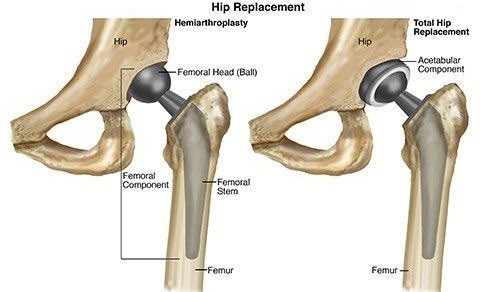
A nurse is caring for a client who is postoperative following a right total hip arthroplasty. In which of the following positions should the nurse place the client's right leg?
Explanation
The nurse should place the client's right leg in abduction following a right total hip arthroplasty. Abduction means moving the leg away from the midline of the body. This position helps to prevent hip dislocation by keeping the hip joint in proper alignment.
Internal rotation, adduction, and external rotation are not appropriate positions for the client's right leg following a right total hip arthroplasty. Internal rotation means turning the leg inward towards the midline of the body. Adduction means moving the leg towards the midline of the body. External rotation means turning the leg outward away from the midline of the body. These positions can increase the risk of hip dislocation.
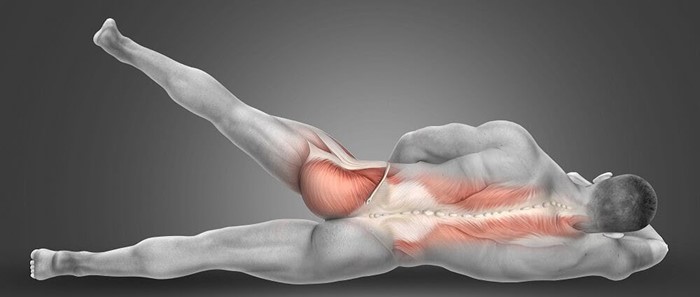
A nurse in a long-term care facility finds an older adult client lying on the floor next to the bed. Which of the following actions should the nurse take?
Explanation
The first action the nurse should take is to check the client for injuries. The nurse should assess the client for any signs of injury or trauma and provide appropriate care as needed.
Obtaining a prescription for medication to sedate the client, calling the family and asking them to make arrangements for someone to sit with the client, assisting the client back into bed, and applying restraints are not appropriate initial actions for the nurse to take in this situation. These actions may be considered after the client has been assessed for injuries and their immediate needs have been addressed.
A nurse is shopping and finds a woman who has collapsed with right-sided weakness and slurred speech. Which of the following actions should the nurse take?
Explanation
The nurse should call emergency medical services if they find a woman who has collapsed with right-sided weakness and slurred speech. These symptoms could indicate a stroke or other serious medical condition that requires immediate medical attention.
Finding a location for the client to sit, driving the client to the nearest emergency room, and obtaining the number of the client's provider are not appropriate initial actions for the nurse to take in this situation. The priority is to get the client immediate medical attention by calling emergency medical services.
A nurse in the emergency department is assisting with the care of a client who has myasthenia gravis and is in crisis. The nurse should identify which of the following factors can cause a myasthenic crisis.
Explanation
The nurse should identify that developing a respiratory infection can cause a myasthenic crisis in a client who has myasthenia gravis. A myasthenic crisis is a sudden worsening of myasthenia gravis symptoms, which can include difficulty breathing and swallowing. Respiratory infections can exacerbate these symptoms and trigger a myasthenic crisis.
Taking too much-prescribed medication, insufficient exercise, and insufficient sleep are not factors that can cause a myasthenic crisis. Taking too much-prescribed medication can cause side effects but would not directly cause a myasthenic crisis. Insufficient exercise and insufficient sleep can worsen overall health but would not directly cause a myasthenic crisis.
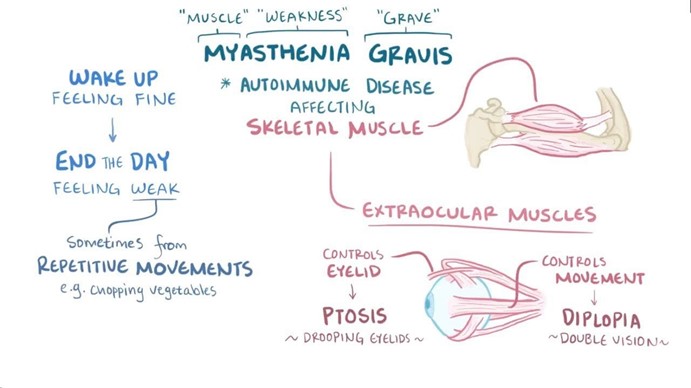
A nurse is collecting data from a client who fell at home and reported a brief loss of consciousness. Which of the following findings should the nurse immediately report to the charge nurse?
Explanation
The nurse should immediately report small drops of clear fluid in the left ear to the charge nurse. This finding could indicate a cerebrospinal fluid (CSF) leak, which can occur as a result of a head injury. A CSF leak can be a serious medical condition that requires immediate attention.
An edematous bruise on the forehead, client disorientation to place, and a heart rate of 110/min and regular are also important findings that the nurse should report to the charge nurse. However, these findings are not as urgent as the presence of small drops of clear fluid in the left ear.
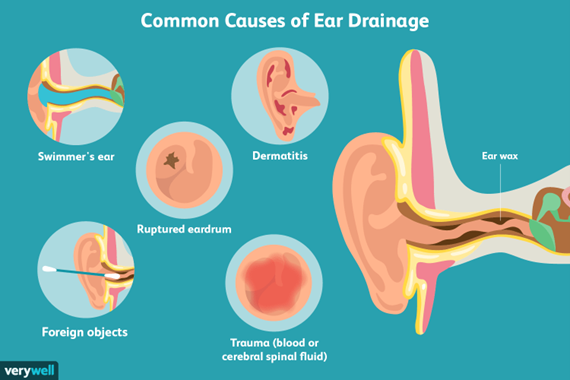
You just viewed 10 questions out of the 45 questions on the ATI Custom Custom Medical Surgical Nurse Exam 2 Exam. Subscribe to our Premium Package to obtain access on all the questions and have unlimited access on all Exams. Subscribe Now



